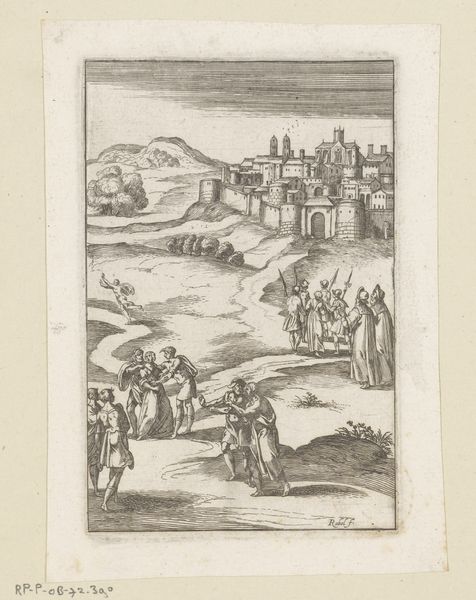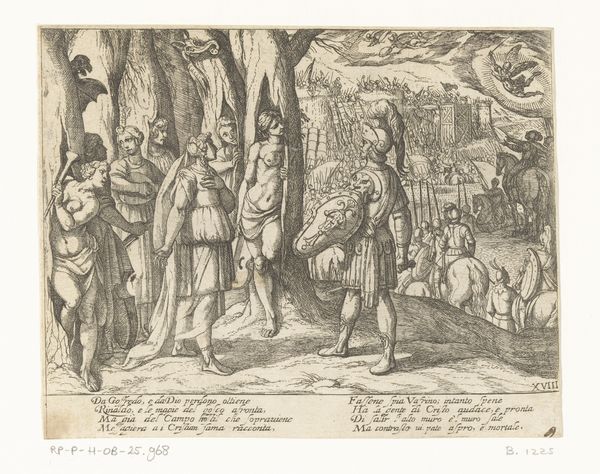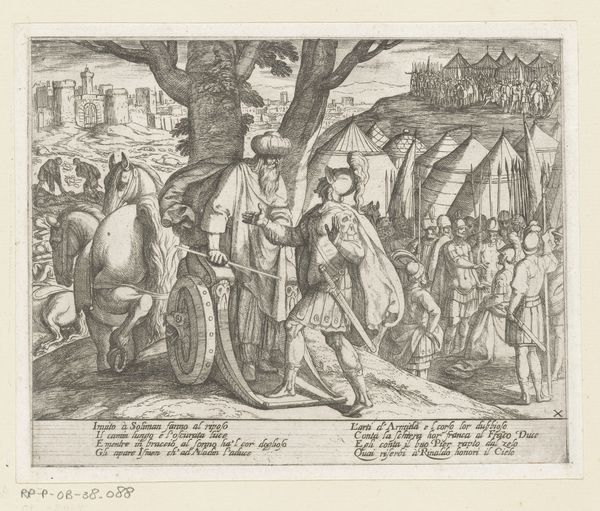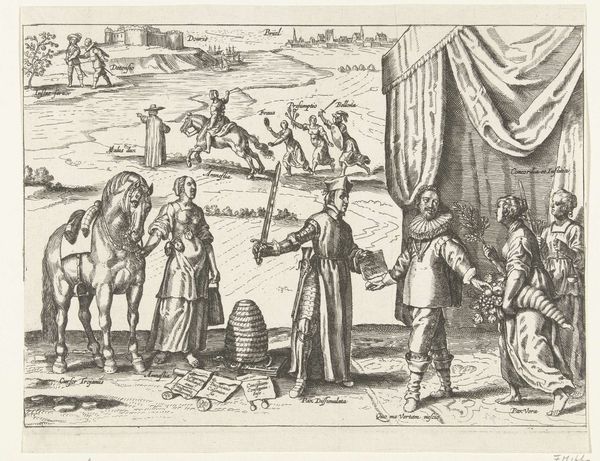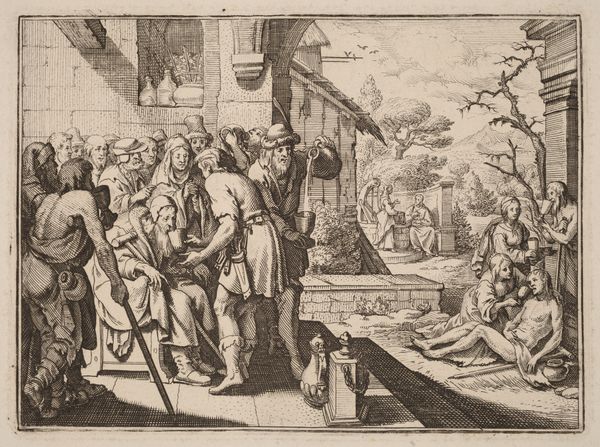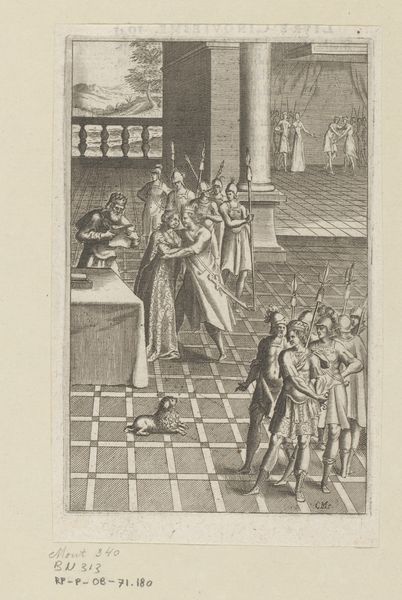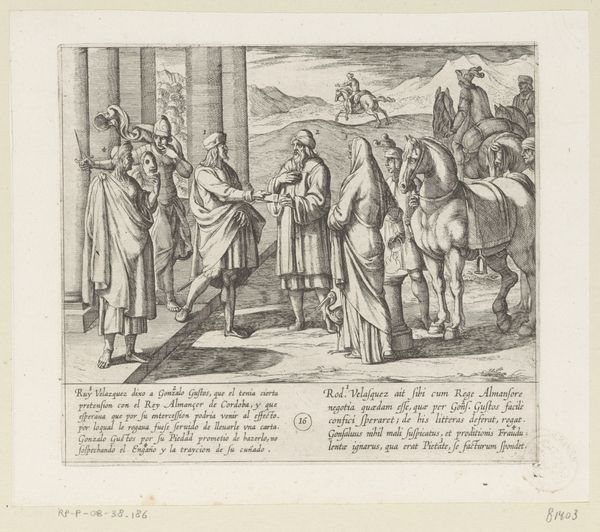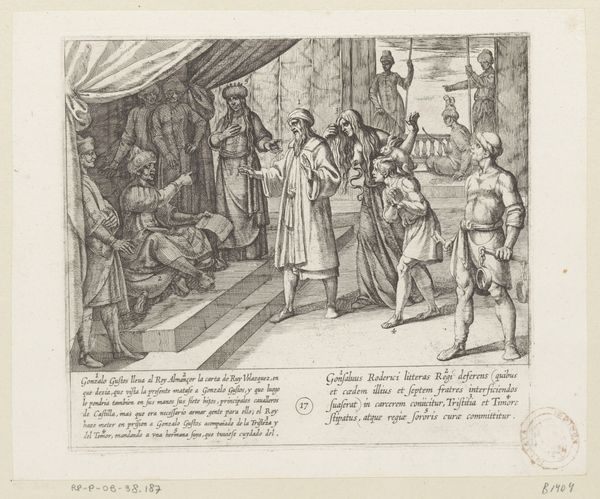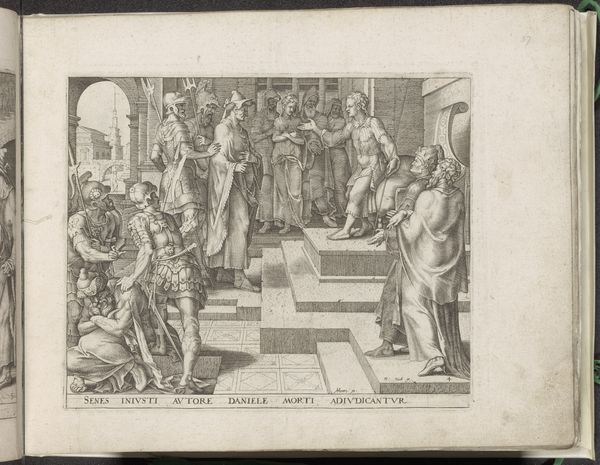
etching
#
narrative-art
#
baroque
#
etching
#
old engraving style
#
etching
#
line
#
cityscape
#
history-painting
Dimensions: height 60 mm, width 85 mm
Copyright: Rijks Museum: Open Domain
Editor: Here we have Daniel Sudermann's "In openlucht wordt aan vorst op troon een petitie overhandigd," an etching from 1624. It's quite striking, all those figures meticulously rendered! What meaning do you find woven into this scene? Curator: The key to interpreting this etching lies in recognizing how it taps into our cultural memory. Notice the supplicant, kneeling before the enthroned figure. This is a scene of power, undeniably. But also, of implied negotiation. The petitioner offers something - a document - yet the king is framed with the double-headed eagle, suggesting the authority is also divine, sanctioned through symbolism that echoes across centuries of art. Do you think the city in the background plays a role? Editor: Perhaps it's simply a setting, defining place. The walls lend additional strength. Curator: It does, but think more deeply. Cityscapes, especially ones featuring prominent fortifications, have historically been employed to suggest the health and the power of a polity. This echoes the exchange in the foreground. There is something else here. The posture of supplication versus the king. A very simple concept of power and social hierarchies. Editor: That’s fascinating! I hadn't considered how the symbols work together to reinforce a sense of divine right, beyond the immediate interaction. Curator: Precisely. The layers of meaning are not always immediately apparent, and are built over decades or centuries. Even today, symbols resonate because of that accumulated cultural weight. Now think what could this document contain for a king on his throne? Is he inclined to grant a wish from a city that seeks it from a royal figure? What kind of symbols the king has that represents the answer? Is it the scepter or the throne? Perhaps both are the answer... Editor: It really opens up new avenues of interpretation. Seeing it not just as a historical depiction, but a symbolic language, that helps greatly. Thank you. Curator: Indeed. Remember that an image's true power rests not just in what it shows, but in what it evokes from the viewer's deep-seated understanding of the world, and that every single part is interconnected, building something new.
Comments
No comments
Be the first to comment and join the conversation on the ultimate creative platform.
